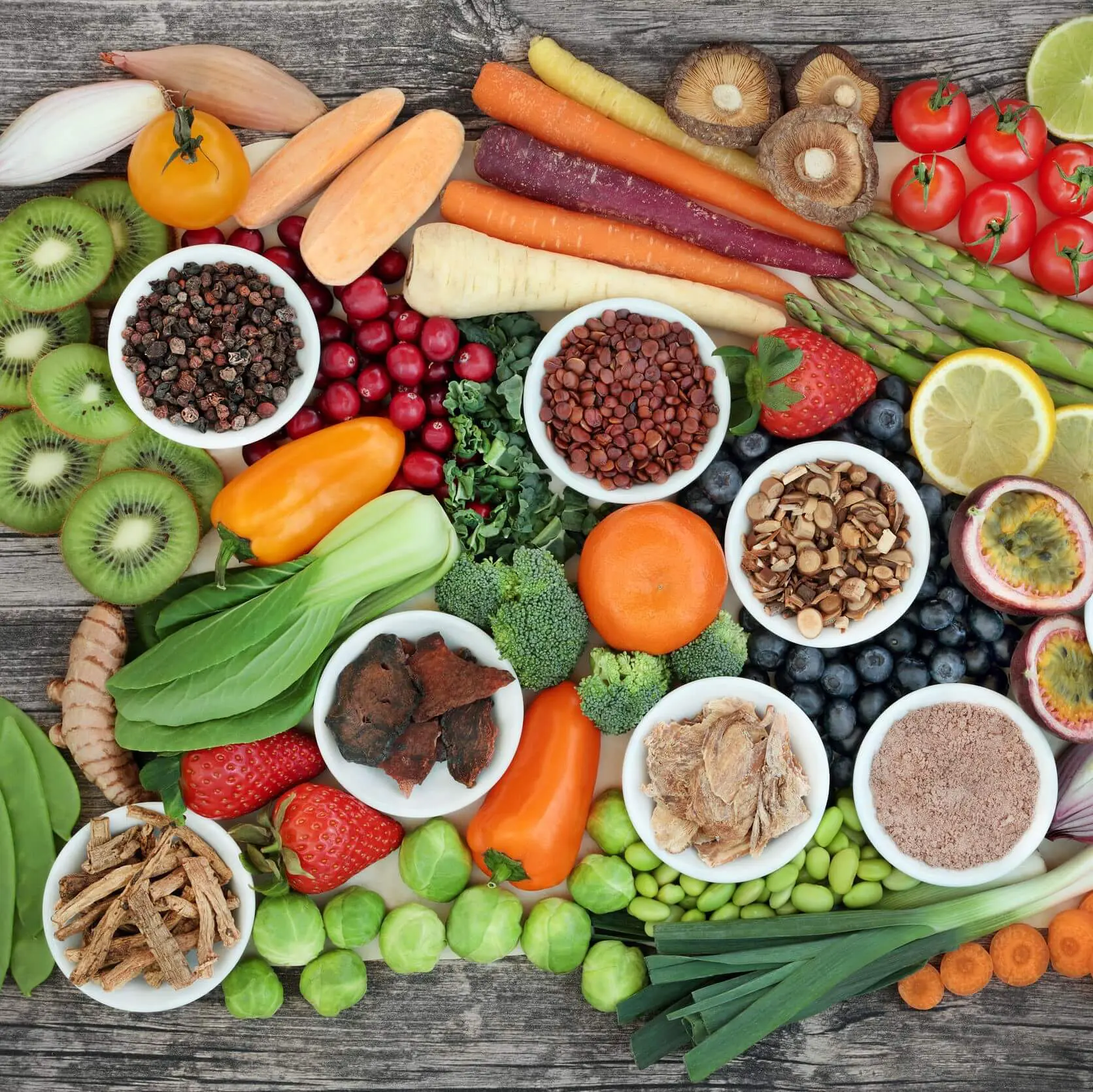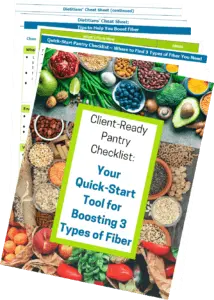
Soup: How to make it a smart strategy for nutrition & weight control
For many people, soup brings an image of a cozy comfort food that just has to be good for you. Here, an update on what studies say about soup and some tips on how it can be both quick and healthy.

Soup can be a delicious way to enjoy vegetables & beans
Remedy for Cold or Flu?
The long-held connection of soup to good health may stem from Grandma’s advice that chicken soup is good when you have a cold or flu. In one often-mentioned study testing blood samples from volunteers, chicken soup slowed the movement of white blood cells called neutrophils that defend against infection. Researchers who conducted the study suggest that chicken soup could benefit people with an infection like a cold through anti-inflammatory effects.
This study was published in 2000. Despite extended efforts searching, I’ve found only one other study on the potential of chicken (or any other) soup as cold and flu remedy. That said, this is a case where there’s no harm in trying it.
Soup as Ally for Weight Control?
Some research suggests that starting a meal with soup may help fill you up and reduce the calories you consume. In a study at Penn State, for example, people’s total calories at a meal were 20 percent lower from a test meal served 15 minutes after a serving of vegetable soup than when no soup was served before the identical meal. It didn’t matter whether it was a chunky or puréed vegetable soup, but the soup was always low in “calorie density”. This study is part of a body of research that provides the background for the Volumetrics books by one of the key researchers, Barbara Rolls, PhD, recently ranked among top 10 diets by U.S. News and World Report.
The concept behind this work is that if you can fill up on food that is low in calories, your hunger will be satisfied with fewer total calories, helping you lose or maintain weight. Broth- and tomato-based soups that include plenty of vegetables and very little fat are relatively low in calories in a filling volume of food. Rich cheesy or cream-based soups are a different story; the same portion could actually increase total calorie consumption.
Consider one other caution about soup as a weight control strategy: Studies have clearly established that for many people, seeing large portions of food leads to eating more, regardless of hunger. If soup is a starter for your meal, maximize weight control benefits by preparing smaller servings of other foods in the meal.

Carrot-Ginger Soup; image reprinted with permission from www.dashofeast.com & www.healthyaperture.com
A balanced soup that provides a nutritionally complete meal in itself is another tweak on this weight control strategy. Make sure to include beans, chicken, fish or other lean protein in addition to a bevy of vegetables. Beans or a whole grain like brown rice or whole wheat pasta provide fiber and nutrients, too. Still, you do need to pay attention to portion and your body’s signals that you’ve had enough. In an experiment by Brian Wansink, PhD of Cornell University, people with secretly-refilling soup bowls ate significantly more than people eating from regular soup bowls.
Soup as Stealth Source of Nutrients
Regardless of impact on weight or infections, one of the reasons I consider soup a strategy for good nutrition is that it provides a vehicle through which we can work more vegetables and beans into our meals. Tomato- or squash-based soup provides a serving of vegetables in the liquid itself, and then we get more with a variety of vegetables added.
Doable Tips for Soup that’s Quick & Healthy
Options are endless – just consider how much time you’ve got and how “homemade” you want this.
- When you’ve got time at home for an evening or over the weekend, recipes abound for healthy soups made from scratch. Have fun making a batch and enjoy the aroma; freeze some for future use.
- When time or interest in cooking is limited, start with low-sodium broth, no salt added canned tomatoes, or frozen or canned squash or pumpkin puree as the base. Then have fun adding an assortment of fresh vegetables you need to use up, frozen vegetables, and drained canned beans. Throw in some frozen chopped spinach for nutrition pow with no effort. With any of these options, you can easily pack in one to three standard servings of vegetables per bowl. Amp up the flavor by adding at least a quarter teaspoon per person of a dried herb like thyme.
- When you’re super-crunched for time, a smart choice of commercial soup can be a great starter. “Vegetable” soups often contain less than a true serving of vegetables in a bowl, and sodium is typically 750 to 1000 milligrams (mg) per one-cup serving. (If you start with condensed soup, that means less than half of a ten-ounce can). That sodium is a hefty portion of the suggested maximum of 1500 to 2300 mg of sodium a day. Look for reduced-sodium versions under 500 mg per cup (some go up to 850) which is better, though still not low-sodium. The trick: dilute them.
One of my favorite options when I’m in a super time-crunch are the Campbell’s V8 soups that come in cartons. Each cup contains 1 ½ to 2 ½ servings of vegetables. I dilute them with an equal amount of sodium-free bouillon, water or no-added-salt tomatoes to bring the reduced-sodium content even lower. Then I load them with even more vegetables and some beans. Depending on the seasonings I add, the soup can turn from French to Mediterranean with basil and oregano or rosemary, to something more exotic with cumin and ginger. Sometimes I top the soup with some toasted walnuts or unsalted peanuts. We’re talking about soup that can be a complete meal in 10 minutes. If I have an extra 10 minutes, I start by quickly stir-frying some garlic and/or onion before I pour the soup in the pan.
My husband (the innocent unknowing) often suggests that we serve the delicious creation at our next dinner party. Don’t hold back on adding those herbs and onions – making your soup flavorful is part of what makes it satisfying.
*Full disclosure: My description of using the V8 soups is simply an effort to share an example of one strategy I’ve found as I try to feed my family healthfully. I have not received any request from the company to mention it, nor any compensation or free product for doing so.
Resources
To learn more about this concept of soup and other foods low in calorie density as a tool to make weight management easier, check these American Institute for Cancer Research brochures you can download free of charge: More Food, Fewer Calories; and The New American Plate: One-Pot Meals.
The Volumetrics Eating Plan: Techniques and Recipes for Feeling Full on Fewer Calories. Barbara J Rolls, PhD. Harper Collins, 2005.
References:
Rennard, BO et al. Chicken soup inhibits neutrophil chemotaxis in vitro. Chest, 2000. 118:1150.
Flood JE, Rolls BJ. Soup preloads in a variety of forms reduce meal energy intake. Appetite. 2007 Nov;49(3):626-34.
Wansink, B et al. Bottomless bowls:why visual cues of portion size may influence intake. Obesity Research, 2005. 13:93.
Spill MK, et al. Serving large portions of vegetable soup at the start of a meal affected children’s energy and vegetable intake. Appetite. 2011 Aug;57(1):213-9.
Rolls BJ, et al. Provision of foods differing in energy density affects long-term weight loss. Obes Res. 2005 Jun;13(6):1052-60.
Published : January 5, 2012 | Last Updated: January 10, 2012
Tagged: cancer prevention, cancer risk, healthy diet, healthy eating, Mediterranean diet, overweight, plant-based diet, weight, weight control, weight loss
Meet the author/educator
I Take Nutrition Science From Daunting to Doable.™
As a registered dietitian nutritionist, one of the most frequent complaints I hear from people — including health professionals — is that they are overwhelmed by the volume of sometimes-conflicting nutrition information.
I believe that when you turn nutrition from daunting to doable, you can transform people's lives.
Accurately translating nutrition science takes training, time and practice. Dietitians have the essential training and knowledge, but there’s only so much time in a day. I delight in helping them conquer “nutrition overwhelm” so they can feel capable and confident as they help others thrive.
I'm a speaker, writer, and nutrition consultant ... and I welcome you to share or comment on posts as part of this community!


